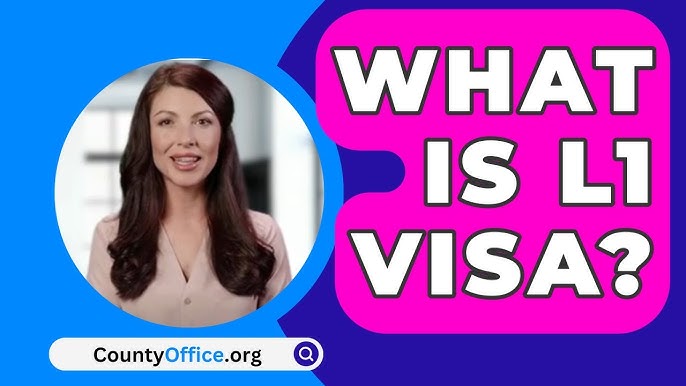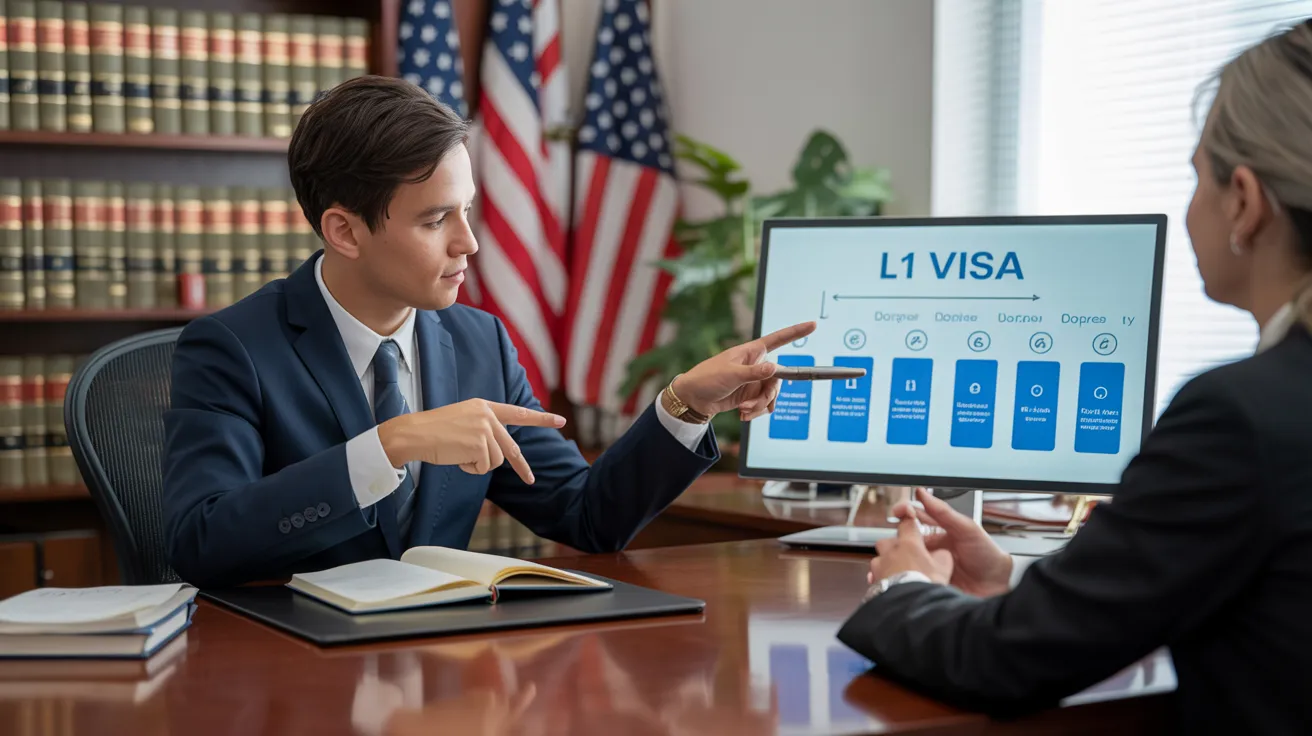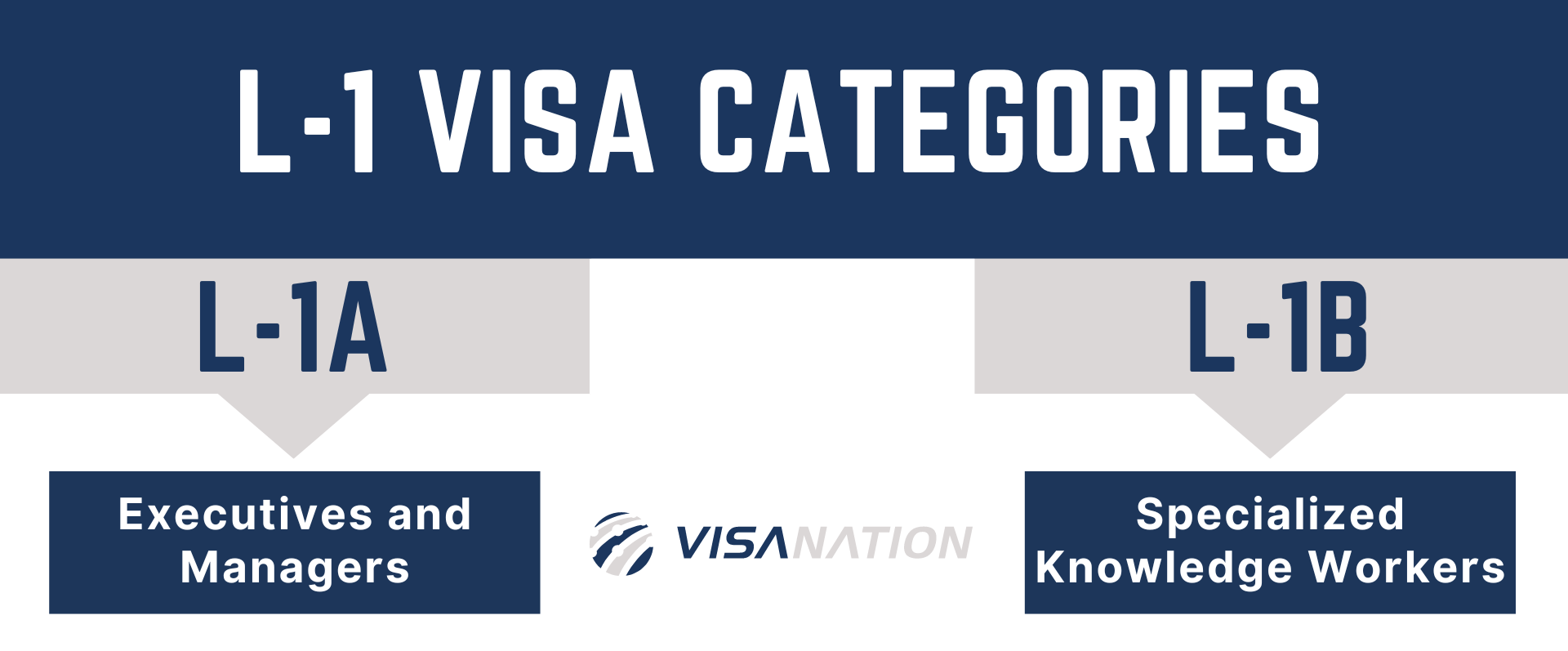Opening Opportunities: A Comprehensive Guide to the L1 Visa Process
The L1 visa procedure presents a vital path for multinational firms looking for to transfer crucial employees across boundaries. Comprehending the nuances of qualification requirements, the distinctions between L-1A and L-1B visas, and the intricacies of the application process can substantially affect a candidate's success. However, maneuvering this complex landscape is not without its difficulties, and mindful focus to paperwork and company sponsorship is vital. As we check out the key parts of this process, the approaches for getting rid of prospective obstacles will come to be noticeable, exposing just how educated prep work can open up a world of opportunities.
Understanding the L1 Visa
Comprehending the L1 visa involves recognizing its relevance as an important tool for international companies looking for to move competent workers between worldwide workplaces. This non-immigrant visa group helps with the movement of execs, supervisors, and specialized expertise employees to the USA, thereby allowing organizations to keep functional connection and harness global ability efficiently. The L1 visa is separated into two key categories: L-1A for managers and execs, and L-1B for workers having specialized knowledge.The L1 visa offers an essential function in boosting a business's one-upmanship in the international market - L1 Visa Requirements. By allowing firms to transfer their key workers, services can ensure that crucial jobs are handled by certified individuals that are currently aware of the business's culture and operational processes. This internal transfer device not just promotes understanding sharing yet additionally promotes development and collaboration across borders.Moreover, the L1 visa is typically favored for its relatively simple application process contrasted to various other visa classifications, as it permits dual intent, allowing holders to go after irreversible residency while on a momentary job visa. This feature makes the L1 visa specifically appealing for both employers and employees, as it improves the pathway for experienced specialists to develop lasting residency in the United States
Eligibility Standards
Qualification for the L1 visa pivots on numerous key requirements that assure both the worker and the company meet certain credentials. This non-immigrant visa is created for multinational business to move employees from international offices to U.S. counterparts.Firstly, the employer should be a certifying organization, that includes a moms and dad firm, branch, associate, or subsidiary of an U.S. business. The firm has to have been doing business for at the very least one year both in the united state and abroad. This ensures that the firm has enough operational security and a reputable presence.Secondly, the worker must hold a supervisory, executive, or specialized knowledge placement. For L1A visas, the candidate must demonstrate managerial or executive credentials, while L1B visas concentrate on specialized understanding pertaining to the organization's products, solutions, or processes. In addition, the employee has to have benefited the foreign entity for at the very least one constant year within the last three years prior to their application.Lastly, the staff member's function in the U.S. must straighten with their previous placement, guaranteeing that their skills and know-how are leveraged for the business's advantage.
Types of L1 Visas
The L1 visa classification comprises 2 main types developed to facilitate the transfer of staff members within multinational firms: the L1A visa for supervisors and execs, and the L1B visa for workers with specialized knowledge. Each kind offers unique purposes and has particular eligibility criteria.The L1A visa is customized for people who hold managerial or executive positions within a firm. This visa makes it possible for high-level employees to move to a united state branch, subsidiary, or affiliate of the same organization. Applicants for the L1A visa must demonstrate that they have been utilized in a managerial or executive ability for at the very least one constant year within the previous 3 years before their application. In addition, this visa uses a longer period of keep, at first provided for three years, with the opportunity of extensions for as much as seven years.In comparison, the L1B visa is planned for experts with specialized understanding pertaining to the business's products, services, or processes. To qualify, applicants have to verify that their knowledge is essential to the organization and that they have benefited at the very least one continuous year within the last three years in a duty that needed this specialized knowledge. The L1B visa is at first given for three years, with expansions readily available for approximately 5 years.Both visa kinds are important for companies seeking to boost their global procedures by leveraging knowledgeable personnel, therefore promoting advancement and performance within the U.S. market.
Application Process
Steering through the L1 copyright procedure entails a number of crucial actions that need to be thoroughly complied with to guarantee a successful outcome. The process starts with the united state company, that should first develop qualification by showing a qualifying relationship with the foreign entity and validating that the staff member satisfies the details needs for the L1 visa classification being sought.Once qualification is verified, the employer initiates the process by filing Kind I-129, the Application for a Nonimmigrant Employee, with the United State Citizenship and Migration Solutions (USCIS) This type should be come with by an in-depth summary of the job responsibilities to be executed, the business framework of both the U.S. and foreign entities, and the employee's credentials. It's essential to verify that all information is accurate and full, as omissions or inaccuracies can cause delays or denials.Upon authorization of the I-129 petition, the next action entails the employee making an application for the L1 visa at a united state embassy or consulate in their home nation. This phase calls for the conclusion of Form DS-160, the Online Nonimmigrant copyright, and arranging a meeting. Throughout the interview, the applicant must provide evidence supporting their qualifications and the employer's petition.After the visa is granted, the staff member can enter the United States to operate in the designated role. Generally, cautious prep work and adherence to each step of the application procedure are crucial for an effective L1 visa end result.
Required Documentation

Vital Kinds Required
Maneuvering the L1 Visa process requires cautious interest to the important types and documentation necessary for an effective application. The main type needed is the Type I-129, Application for a Nonimmigrant Worker, which need to be completed and sent by the U.S. company. This kind details the information of the employment offer and the credentials of the employee seeking the L1 Visa.Alongside Form I-129, the candidate will need to full Form I-539 if coming with family participants are likewise requesting visas. In addition, the company must provide evidence of the certifying relationship between the U.S. entity and the foreign entity, commonly demanding the entry of company documents such as posts of unification or financial statements.Moreover, it is important to include the L Classification Supplement to Type I-129, which specifies the sort of L Visa being requested-- either L-1A for managers and execs or L-1B for workers with specialized expertise. Finally, candidates ought to guarantee that all kinds are signed and dated suitably, as insufficient submissions can lead to delays or denials. Effectively constructing these essential types lays the structure for a smoother L1 copyright procedure.

Sustaining Evidence Requirements
Sustaining documents is crucial for a successful L1 copyright, as it confirms the cases made in the application. Candidates must offer a variety of records to show qualification for the visa, which is categorized right into 2 key kinds: proof of the qualifying partnership in between the U.S. and international entities and proof of the applicant's qualifications.To develop the relationship, candidates need to submit paperwork such as business organizational charts, financial declarations, and evidence of possession. These files confirm that the international company has a qualifying relationship with the U.S. company, whether as a moms and dad firm, subsidiary, branch, or affiliate.For the candidate's certifications, necessary papers include an in-depth employment letter from the international employer, outlining the candidate's job title, tasks, and period of work. Additionally, educational qualifications, such as levels and diplomas, should be provided to confirm the candidate's know-how in the relevant field.
Company Sponsorship Documents

Usual Obstacles
Steering the L1 visa procedure presents several common difficulties that candidates need to understand. Key problems typically include rigid paperwork requirements, potential delays in handling times, and the necessity for stringent lawful compliance. Recognizing these barriers can aid candidates much better prepare and mitigate dangers during their copyright journey.
Paperwork Requirements
The L1 copyright procedure commonly offers considerable difficulties associated with documentation needs. Candidates should give comprehensive documents to develop eligibility, which can cause confusion and possible delays. Trick documents consist of proof of a certifying relationship between the U.S. and foreign company, evidence of the applicant's employment history, and thorough info regarding the job function in the U.S.One typical obstacle is gathering sufficient evidence to demonstrate the nature of the qualifying relationship. Business often have a hard time to present clear business graphes or financial declarations that show the link between the entities. In enhancement, making certain that letters of assistance from employers properly reflect the candidate's job obligations and credentials is important, as vague descriptions can lead to denials.Another concern arises from the requirement for detailed task summaries that align with the L1 visa categories. Candidates have to verbalize not only their existing function but additionally their supervisory or customized knowledge obligations clearly. This necessitates a comprehensive understanding of both the applicant's setting and the regulatory language used in L1 applications.
Handling Dead Time
Experiencing delays in handling times is an usual obstacle faced by L1 visa applicants, often causing aggravation and uncertainty. A number of aspects add to these delays, consisting of high application volumes, raised analysis of applications, and administrative backlogs within the U.S. Citizenship and Migration Services (USCIS) Applicants might find that processing times can vary greatly depending on the service center handling their application, as each facility has its own work and effectiveness levels. Additionally, the intricacy of the applicant's situation, such as the demand for considerable paperwork or information, can further extend wait times.In some circumstances, concerns associated with the applicant's current migration status or previous visa background might likewise lead to extra delays, as USCIS might call for additional review or details. It is necessary for candidates to continue to be positive during this period, maintaining open communication with their employers and legal representatives to attend to any prospective issues promptly.Understanding these processing time obstacles can assist L1 visa candidates prepare for possible delays and reduce the influence on their change and career plans. Persistence and diligence are crucial virtues in steering this elaborate procedure.
Lawful Compliance Issues
Many L1 visa candidates run into lawful conformity concerns that can complicate their trip towards obtaining the visa. Comprehending and adhering to the details regulations set by the united state Citizenship and Migration Solutions (USCIS) is important. Common obstacles include showing the qualifying connection in between the foreign and united state employers, in addition to verifying that the candidate has the requisite specialized expertise or managerial capacity.Additionally, applicants need to supply detailed documents outlining their work L1 copyright copyright tasks, company structure, and monetary practicality of the U.S. entity. Insufficient or unreliable paperwork can lead to delays or perhaps rejections. Employers need to likewise assure that they abide by labor legislations, consisting of wage and functioning problem requirements, which can affect visa eligibility.Another typical problem involves keeping conformity with the regards to the visa as soon as provided. Modifications in employment standing, work responsibilities, or business structure can require amendments to the visa, which if not addressed promptly can bring about lawful difficulties. As an outcome, remaining informed regarding conformity requirements and seeking lawful counsel when essential is important to browse the intricacies of the L1 visa process efficiently.
Tips for Success
Success in the L1 copyright process frequently hinges on precise prep work and interest to detail. To boost your opportunities of approval, begin by extensively understanding the eligibility requirements for both the L1A and L1B visa categories. Examine whether your setting at the business certifies as managerial, exec, or specialized knowledge, as this classification notably affects your application.Next, collect comprehensive documentation that substantiates your cases. This consists of business charts, in-depth job summaries, and proof of the firm's functional framework. Clear and succinct proof of the certifying connection between the U.S. entity and the foreign entity is essential. Confirm that all papers are arranged practically and offered in a professional manner, as this shows your commitment and severity concerning the application.Engage the solutions of an experienced immigration lawyer that specializes in L1 visas. Their know-how can verify indispensable, directing you through complex laws and guaranteeing that all documents follows present legislations. Additionally, prepare for the interview by exercising solution to typical concerns and being ready to review your duty and contributions to the company in deepness.
Regularly Asked Questions
Can Family Members Accompany the L1 Visa Owner?
Yes, relative of L1 visa holders, including spouses and single youngsters under 21, can accompany the primary visa holder. They might likewise apply for L2 visas, which allow them to reside in the USA.
The Length Of Time Can I Remain On an L1 Visa?
The L1 visa enables initial stays of as much as 3 years, with the opportunity of expansion. L1A visa owners might stay for a maximum of 7 years, while L1B visa holders can remain for 5 years.
Can L1 Visa Owners Use for a copyright?
Yes, L1 visa holders can make an application for a copyright. L1 Visa Requirements. They might go after irreversible residency via employment-based classifications, typically requiring sponsorship from their company, given they fulfill the needed qualifications and paperwork needs
What Occurs if My L1 copyright Is Refuted?
If your L1 copyright is rejected, you might obtain a notification outlining the reasons for denial. You can seek to appeal the choice, reapply, or check out alternative visa options based on your circumstances.
Exist Any Kind Of Traveling Limitations With an L1 Visa?
An L1 visa generally enables international travel; nevertheless, re-entry to the united state rests upon maintaining valid status. Tourists need to ensure compliance with visa problems to stay clear of problems upon return
Verdict
